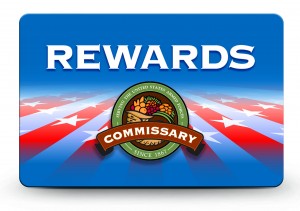I wasn’t surprised by the numbers. I wasn’t shocked by the headlines. I thought to myself “yeah, that seems about right.” Many military families, like many Americans, regularly face food insecurity so these military families, like many Americans regularly fill their pantries with nonperishable items from their local food banks. They may do it once. They do it between pay periods. They may do it every 6 months. The point is that military families use food banks.
This isn’t something new. My husband volunteered distributing food to military families at a southern California installation in 2003. But the news of American service members utilizing civilian food banks has recently grabbed the media’s attention.
It all started with Feeding America’s annual survey. In that report, it said that 620,000 households that seek food assistance from a Feeding America network agency each year include at least 1 member who is currently serving in the U.S. military. That person may be an active duty Marine or he may be an inactive reservist. The Feeding America study didn’t examine that type of specific data. But every media outlet ran with a headline saying “25 percent of military families are seeking food aid.”
The Department of Defense immediately questioned Feeding America’s survey methodology saying that “surveying households instead of individuals while comparing those numbers to military data creates an inaccurate picture.” The Pentagon spokesman also reminded Americans that the military offers the Family Subsistence Supplemental Allowance for low-income families.
But few military families are using the Family Subsistence Supplemental Allowance. Why? My guess is military families want to remain anonymous in their financial struggle. They don’t want their commander to find out they can’t afford to feed their 5 children. That’s why military spouses prefer to visit a food pantry at their local churches. In the majority of cases, spouses show their military ID and the food bank will give them food that day.
A short and incomplete search on Google showed food drives for hungry airmen, lines of Marine families waiting for free food, donation drop-off locations near Navy installations, partnerships between the USO and food banks and churches scrambling to fill the need for veterans, National Guard soldiers and Reservists families. I’m sure if you ask your FRO or the Navy and Marine Corps Relief Society, they will tell you that some, not all, military families are struggling financially to make ends meet.
If military families weren’t struggling, than why would there be a need for food banks located on overseas military installations?
Many military families, like many Americans are living paycheck to paycheck. They aren’t saving for their dream house and they won’t buy a vacation home at their retirement. They are scraping by and local food banks ease their burden.
Do I think military families should use local food banks? Frankly it’s none of my business. But I do think that the Pentagon needs to hear the old adage: if one military family is relying on a local food bank, that’s one military family too many.
.jpg)



















